





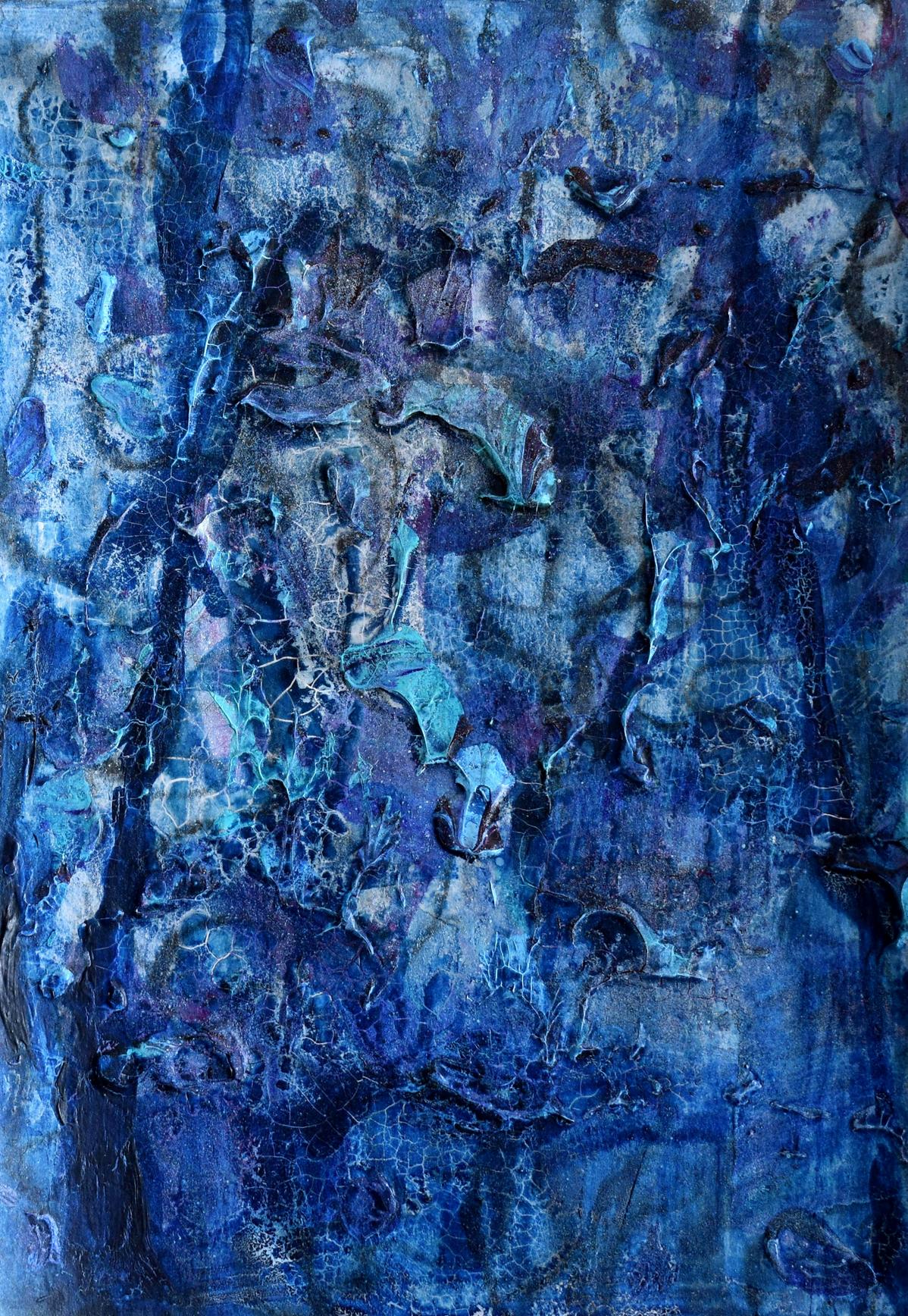
EDITOR’S NOTE










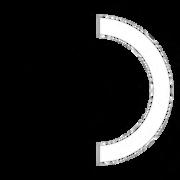
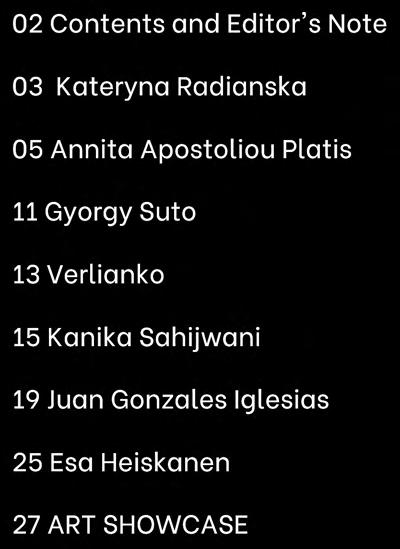
Julia De Gabriel
Arancha Garcia
Grimmy Granny
Sa’ood Mhlongo
Morgooz
Oksana Zharun
Marko Chakalovic
Trevor Healy

Welcome to the very first issue of The Alchemical, a magazine born from the passion, perseverance, and incredible talent of the artists who make up our community. This publication is more than just a collection of art—it is a testament to the creativity, resilience, and dedication of those who continue to push the boundaries of artistic expression.
At its heart, The Alchemical is a love letter—a thank you to every artist who has trusted us with their work, shared their vision, and contributed to the ever-growing tapestry of our collective creativity. Your support has been instrumental in shaping this community, turning it into a space where art thrives, voices are heard, and ideas take form.



Angelsanddemonshavebeentimeless symbolsoftheinnerdualityweallface— thepushandpullbetweenourhighest virtuesandourdarkestimpulses.Whileno longertakenliterallybymany,they continuetorepresentthestrugglewithin: compassionversusanger,loveversusfear, selflessnessversusego.
Thisinnerconflictshapesthechoiceswe makeeveryday.Choosingtolistentoour “angelic”side—thepartthatseeks kindness,growth,andconnection—helps usevolveintomorewhole,conscious beings.Thejourneyisn’taboutperfection, butaboutawareness,intention,andthe couragetogrow.

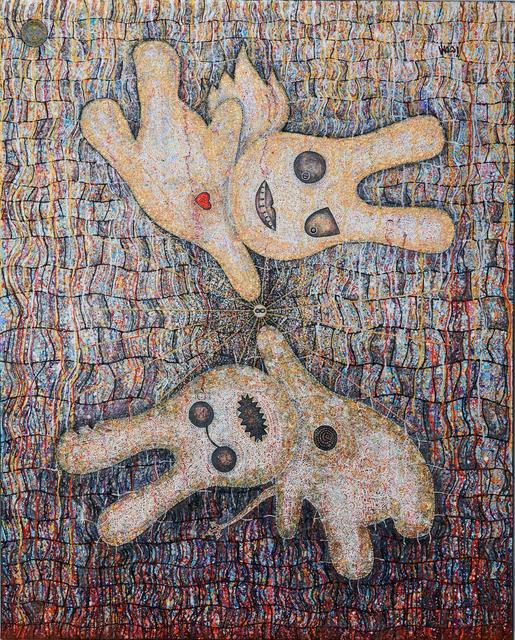



Kateryna Radianska, CV Kateryna was born in 1978 in Kyiv, Ukraine. Kateryna is an artist, a painter, and a yoga teacher. She has studied extensively and has several diplomas in various spheres, from law to psychology and sports rehabilitation. In 1995, she studied at the Faculty of Decorative and Applied Arts of the Kyiv State Institute of Decorative and Applied Arts and Design named after Mikhail Boychuk.
Kateryna has created more than 100 paintings, founded several brands (for clothes and shoes), created a number of other projects
She had personal exhibitions as well as participated in a number of collective ones.
At the current time Kateryna leads yoga classes and continues her art creativity.
works Inner Angel&DemonAngels and Demons have been a part of human mythology for centuries, often representing the duality of good and evil within us. While the concept may not be taken literally in modern times, the idea of an internal struggle between our better and worse selves remains relevant.
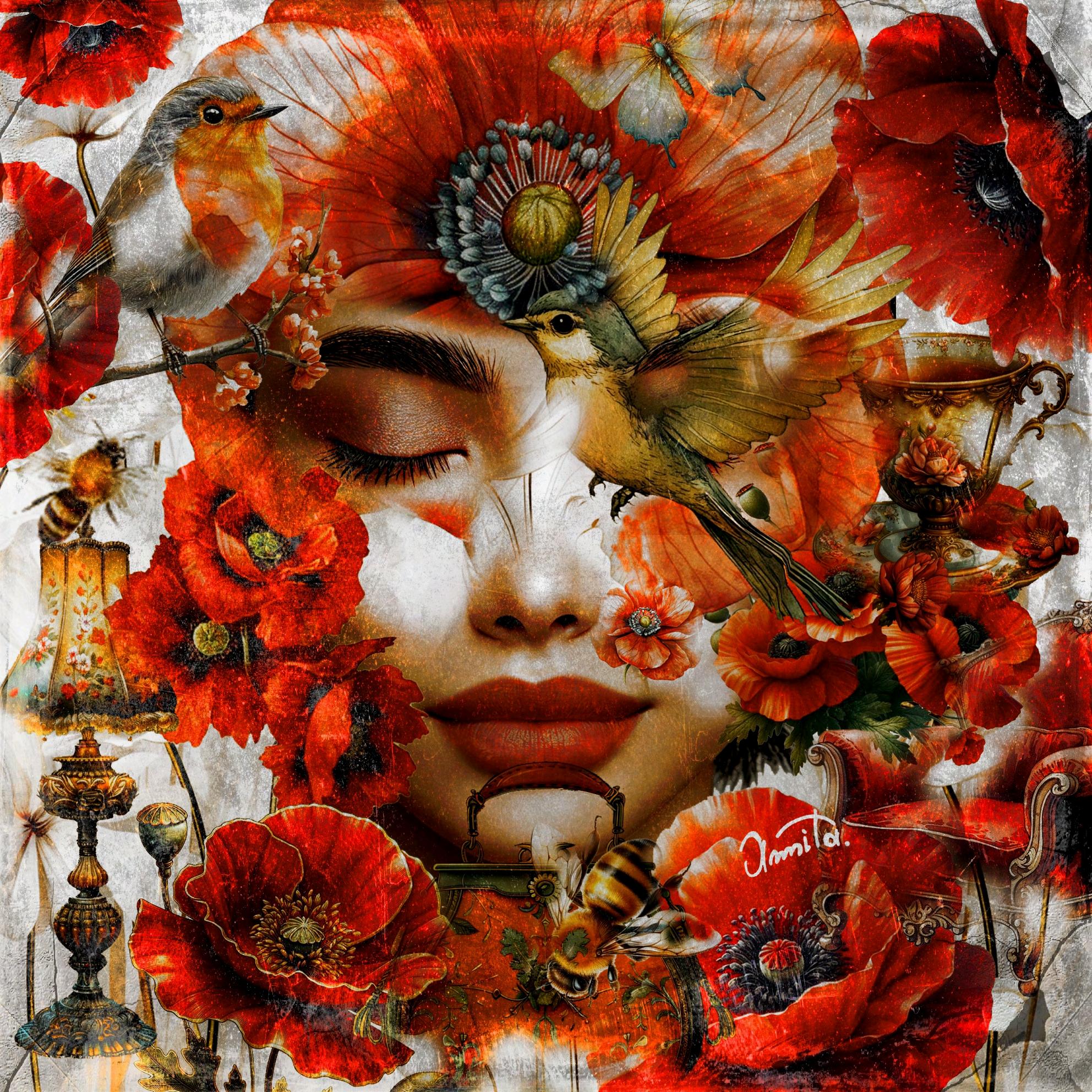
Annita Apostolidou Platis is a multidisciplinary artist whose work explores cyclical transformations, mythology, and the passage of time. With a background in Haute Couture Design, she blends acrylics, ink, impasto, and digital collage to create vibrant, textured compositions that capture the dynamic interplay of femininity and history.

Your artistic journey began at a remarkably young age, with your first mentor recognizing your talent when you were just a child. How has that early start shaped your approach to art today?
Art has always been an intrinsic part of my existence—it was never just something I did, but something I was. My early years, guided by the wisdom of my first mentor, instilled in me a deep reverence for artistic discipline, form, and expression. That early encouragement gave me the confidence to explore beyond conventional methods,
to view creation as an extension of my soul rather than a mere craft. It shaped my approach to art as an ongoing evolution, where curiosity and transformation are essential. Today, I embrace art as a dialogue between past and present, always seeking new ways to translate emotions into visual form.
Having faced obstacles, such as your allergy to oil paints, you found new ways to express your creativity. How has overcoming these challenges influenced your artistic evolution?
Art, much like life, is an act of adaptation. My allergy to oil paints initially felt like a limitation, but it became an invitation to explore new mediums that resonated with my vision. Acrylics, with their vivid intensity, became my new language. Ink, with its fluid unpredictability, allowed me to embrace spontaneity. The impasto technique, reminiscent of sculpting fabric, introduced a tactile quality to my work, enriching its depth and movement. Each of these materials gave me new ways to express emotion and narrative, ensuring that my artistic voice remained unrestricted by limitations.
Yet beyond technique, this challenge also rekindled an artistic instinct rooted in my past—collage. From my earliest years, I instinctively assembled cutouts from fashion and art magazines, drawn to the interplay of form, texture, and meaning. This passion carried into my fashion studies, where my portfolio covers became canvases for layered visual storytelling. Over time, my love for collage evolved, seamlessly blending traditional methods with digital possibilities, allowing me to explore a new dimension of artistic composition.
Overcoming artistic limitations reinforced a fundamental truth: creativity is boundless. Obstacles do not hinder the artist; they refine them, pushing them toward innovation and deeper selfdiscovery. My journey across mediums—whether through acrylics, ink, impasto, or digital collage—has been a constant dialogue between past and present, tradition and transformation. Each technique is a reflection of my artistic evolution, a means of exploring the cyclical nature of renewal and reinvention that defines both art and life itself.


Annita Apostolidou Platis
The Eros exhibition by The Alchemical Art featured Annita Apostolidou Platis alongside international artists, exploring themes of love and transformation reflected in her work. A digital billboard at Melbourne's Flinders Street Station further amplified her global visibility.
What do you hope viewers take away from your work in EROS? Is there a particular emotion or reflection you want to inspire?
More than anything, I hope EROS invites viewers to feel—to immerse themselves in the delicate dance between light and shadow, to embrace love in all its forms—its beauty, its fragility, its power to transform. Love is never static; it is fluid, evolving, much like art itself. Whether it evokes nostalgia, longing, or serenity, my wish is that each person finds a personal connection within the pieces, a quiet moment where the artwork speaks directly to their soul.
Each piece embodies the essence of the season with love awakening— contrasting delicate pastels with vibrant scenes of renewal. Rebirth is mirrored in female figures enveloped in floral motifs, accompanied by butterflies symbolizing transformation, birds representing freedom, and bees evoking the persistence of love and creation.
Their presence echoes the harmony of nature’s cycle—a dance of pollination, flight, and metamorphosis. Vintage objects weave a narrative of past merging with present, infusing each artwork with a sense of hope and possibility.
Just as spring breathes life into the earth after winter’s slumber, love, too, renews us—unfolding in delicate, ephemeral moments that shape who we become. Through EROS, I invite viewers to experience love’s transformative journey, to see its presence not only in art but in the quiet, unseen spaces of their own hearts.
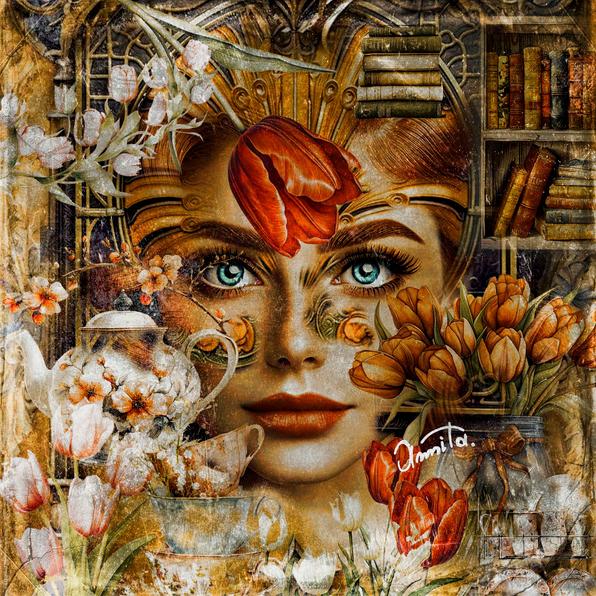


Website: www.annitaplatis.com
Instagram: @annita.apostolidou.platis
LinkedIn: Annita Apostolidou Platis





My motto: “Let
everyone find their own truth, and let everyone meet themselves a little!”
I work with airbrush techniques. I love the possibilities it offers, which I might not be able to achieve with other methods. Currently, I work as a nurse in a nursing home. For me, creation has always been intertwined with helping vulnerable people.

I love the organic, biomechanical direction, where the living merges with the non-living, the real with the unreal. I enjoy the surrealist biomechanical trends where they try to blend conscious mental events with the world of the unconscious.
Daily, I face the physical and emotional vulnerability of people, the myriad symptoms and manifestations of physical and mental decline. The feelings and fears that take hold of the residents deeply affect me as well. Often, I process the accumulated tension from my work by simply painting it out. I frequently draw inspiration from the emotions and events that take hold of me within the walls of the institution.
My subject matter is almost always the human being itself, with its own emotional events, feelings, and basic fears such as loneliness, pain, and guilt.
My primary goal is not to model my immediate surroundings. I have never strived for precise photorealistic representation. I much prefer to work from within: I deal with the most guarded, fundamental emotions of the human soul. I consider myself an artist who works “from within” who gives from the depths of his soul.
I try to uncover a world that is still untouched, which has not yet been imprinted with the categories and “templates” necessary for understanding by the human mind that wants to interpret everything.
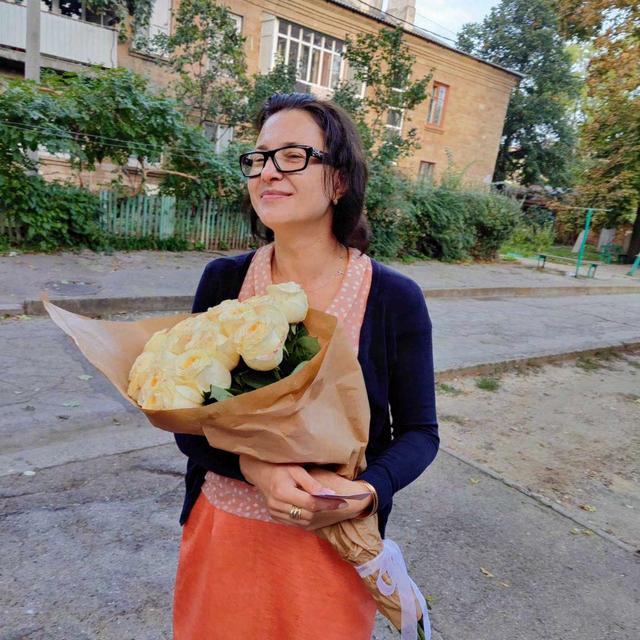


A lawyer by profession but an artist at heart, Verlianko (Irina Gamarnik) pours her soul into every brushstroke, describing her art as an extension of herself. Painting brings her a sense of fulfillment and vitality, a way to share her innermost emotions with the world. For her, the canvas is more than a medium—it’s a space to broadcast love and connection.
As a lawyer with a deep passion for art, how did you discover that painting was your true calling?
The desire to draw has been with me since childhood. I always had a pencil in my left hand and a sheet of paper in my right. I drew as an amateur, following my mood. My mother still keeps some of my childhood drawings. That desire never left me. However, I often pushed aside what I called "frivolous declarations of my soul." Years passed, and family, children, and work consumed my time. But at around 38 or 39 years old, I realized I could carve out time for drawing, no matter what. I bought an easel and all the supplies I needed. I started with watercolors, but dry pastels and oil paints eventually captured my heart.
Drawing helps me think and concentrate, giving me the chance to rethink everything happening around me. I have an endless stream of ideas for paintings, but a waiting list for creating them. Thankfully, this doesn’t interfere with my primary professional life. The thought that I could dive into the world of drawing after work or on my days off energizes me and gives me strength.
I believe the passion for drawing was always within me, lying dormant. The courage to draw, however, only came with years of growing up. It turns out that I allowed myself the courage to approach the canvas and begin. Initially, I noticed a constant urge to sketch—during meetings, brainstorming sessions, and without thinking about the sketch's purpose. My hand would just move, giving in to the flow. Over time, that desire grew uncontrollable.


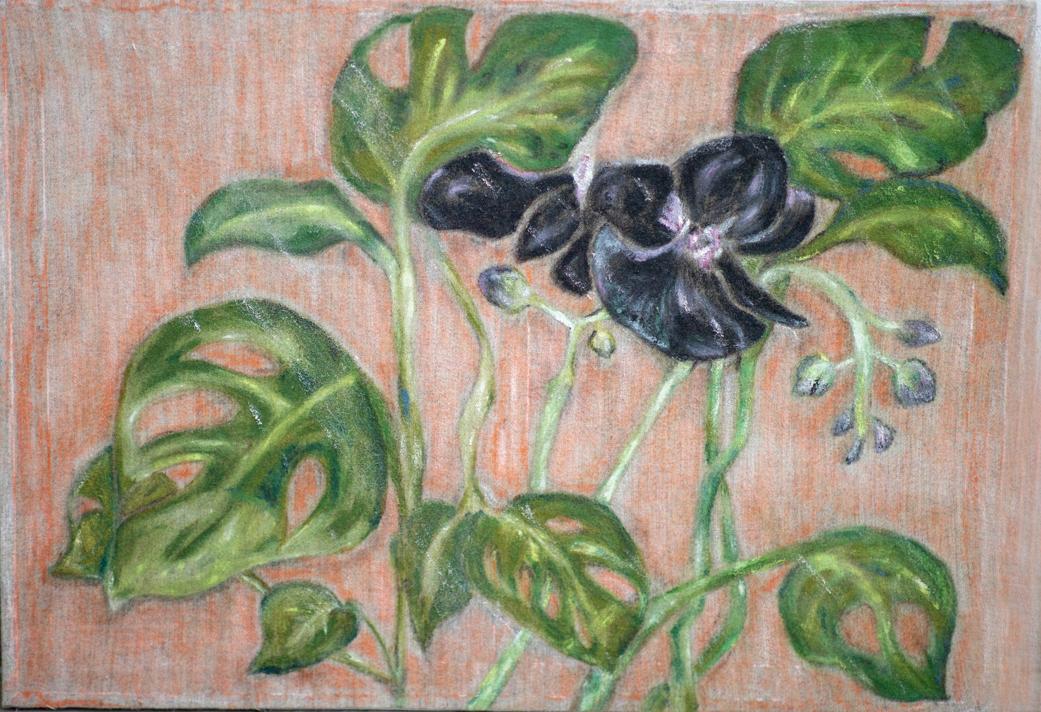



Kanika, a talented mixed media artist from India, pours her thoughts and emotions onto the canvas, creating works that serve as powerful reflections of her inner world. Her art combines diverse painting techniques with found textures, blending layers of meaning into textural abstracts.

You describe your paintings as a reflection of personal emotions. How do you approach translating your feelings into visual form? Creating art feels like secondnature to me—it's an intuitive and meditative process that allows me to connect deeply with myself. Abstracts are my absolute favourite to paint because they are the purest expressions of my emotions on canvas. Every brushstroke, crayon mark, texture, and colour reflects my thoughts, feelings, surroundings, and perceptions. It's like translating my inner world directly onto the canvas, raw and unfiltered.
What experiences or emotions tend to inspire your abstract work the most? Could you share a story behind your favorite works?
Every piece I create tells its own story and captures its own emotion, reflecting exactly what I felt in the moment. That’s why I’m so drawn to painting abstracts—they’re my way of staying true to myself. During my undergraduate studies in Literature, I vividly remember reading Aristotle’s Poetics. He wrote something that deeply resonated with me: “imitation is two steps away from reality.”
Think about it—when we paint an object, the object itself is the first creation, how we perceive it in our mind becomes the second, and what finally lands on the canvas is already two degrees removed from reality. But abstracts? They break free from this chain. They’re the purest form of creation because they didn’t exist before— they’re born entirely from within, untouched by anything external. What excites me even more is the uncertainty. Even when I plan certain elements, I never truly know where an abstract piece will take me. It’s unpredictable, raw, and full of surprises—and that’s precisely why I love it



When did you first discover your passion for painting, and how did you come to embrace mixed media as your preferred approach?
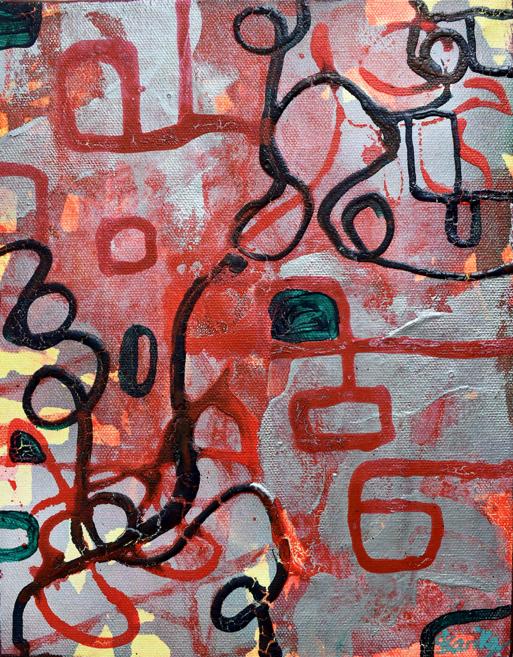
I’ve been painting since childhood—it’s always been my way of expressing myself. In 9th grade, curators from the London Transport Museum visited my school for a project where we painted our interpretations of life on public transit, which led to my first group show. Art became an even bigger part of my life in 2018, and even more so in 2019, during a health scare that left me with months of downtime. Painting became my therapy, my escape—I’d immerse myself in it for 12 hours a day without even noticing. My love for mixed media comes from pure curiosity and a relentless drive to experiment with new techniques and materials.
What do you hope viewers feel or take away when they experience your art?
Some get lost in the tiny details, others feel unsure of what to think or imagine, and some discover elements or perspectives I never even noticed myself—and that’s the magic of abstraction. No two people experience it the same way, and watching their unique reactions to my art is my absolute favorite part.
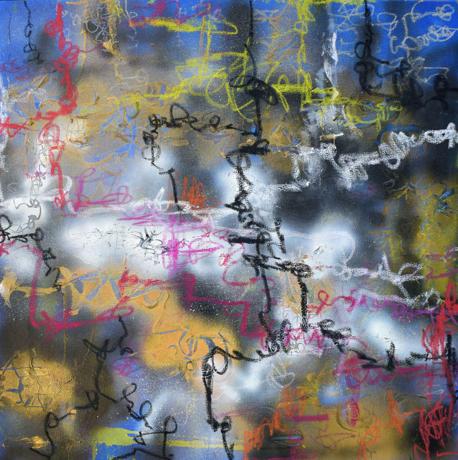

What advice would you give other artists starting out on their journey?

Pour your heart onto the canvas and tune out the naysayers. Create what speaks to you, what brings you joy. The act of creating is its own reward—everything else, like sales, appreciation, or exhibitions, is just a bonus. If it comes, great; if not, create anyway.



Your art style is unique to what people would usually think of art pieces on canvas. What was your journey to using acrylic markers for your abstract pieces, and how did you decide that it was the perfect medium?
Well, I guess it was a matter of convenience. When I started, I used oil and regular acrylic paint—you know, the starter pack. But I lacked the patience for oil; waiting days for it to dry was frustrating. I even tried speeding it up by covering the canvas with my fingers and blasting it under high-pressure water, which gave it a cool aged effect. Eventually, I wanted something more efficient. Since I had experience with pens from drawing comics as a kid, I switched to thick Posca markers—they had the ease of a pen with the quality of acrylic.
When I was a kid, I used to draw comics, so I’m quite familiar with pens. I found these thick Posca markers, which combine the best of both worlds: the convenience of a pen with the “quality” of acrylic paint. I just kind of loved them, and I kept using canvas because—well, I don’t know. I just was using them back then. It felt okay to me, and the result was quite neat.
What inspired you to blend pop culture with spiritual themes in your work?
Well, this one is deep shit, I guess. When I was 29, I experienced an “enlightenment experience” or—I don’t know what the hell it was—but itchangedeverything.
I was kind of a successful advertising creative; everything was going well more or less. But one day, I just “woke up.” In a single moment, I started to see the lies everywhere—in my life, in the world—and I just collapsed. At the same time, I felt this super urgent need to paint. When I was a kid, I just wanted to be an artist, you know. But you had to fit with the world too, so I chose the advertising path because it blended what I liked with what was “good for me.” And up until that point, it worked properly. But I’m afraid the world has taken another path; truth has become stronger, and lies are no longer allowed. I mean, it wasn’t only a personal process—it happened to everything these last years. My personal process was just a part of the whole process. I can speak about it now quite regularly, but, man, it was intense. I didn’t know what on earth was happening to me.


So, obviously, I felt super attracted to spiritual issues. I needed answers, you know. I got addicted to spiritual texts; I “suddenly understood The Bible profoundly.” Jesus, what a stage! It was amazing, even when I was twisted as fuck. One book after another, blogs, walks in nature... It was The Enlightened Juan Stage. And, sincerely, I became an expert. I could explain to you the depths of universal knowledge.
Well, so the art speaks about this: I was a pop boy—into trends, comic books, music, movies—and suddenly I became DA MASTER. One thing led me to another, in a way, and I thought, “Well, maybe others can relate to this.” I mean, what they talk about in the church feels quite lame. I can understand why people aren’t attracted to religion—it feels like bullshit how they explain it. But if they told you, “The Kingdom of God is like Eminem: you are the underdog in a world of lies, but truth must prevail (or something)...” it could work out. And I try to express that with art. I’m quite aware that the artworks, by themselves, leave a lot of questions unanswered, but I like tricky stuff—not being too obvious. Pull the string slowly. The more you investigate, the bigger it becomes. And, above all, not being too pretentious. So, I guess people don’t get all this with just one look. But maybe their attention is caught enough
How do you envision your style evolving in the coming years?
Well, nice question, especially these days; my stuff is losing its color. I’m going black and white for some reason. I can see why: the artworks, obviously, reflect my personal evolution. And I’m afraid my refined masculine side is taking the lead. These last few years, it was a mix between my kiddy side and my grotesque masculine side. And that, also, speaks about the zeitgeist of those years: a mix between the “unicorn vibe” and the “Trump vibe,” let’s say. That mix, as we all know, is extreme.
So I’m glad I could capture that in my artworks blended with my personal view of it all. I kind of agreed and kind of disagreed with both sides. I believe the fight is easy to see in the pieces. (cont.)
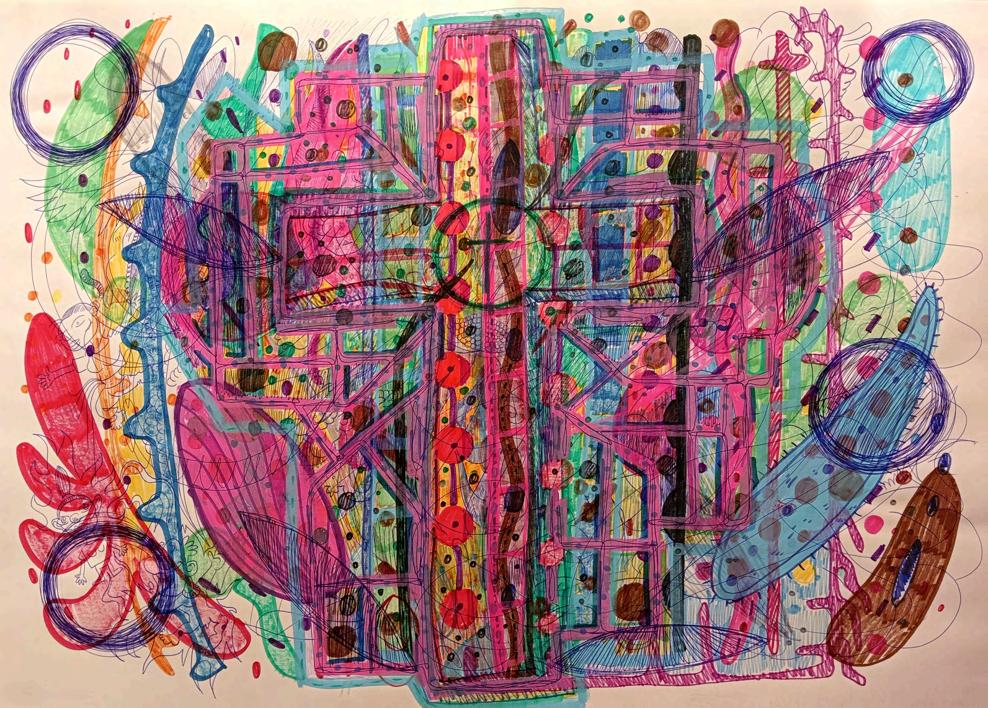

Maybe the best advice I can give is to stay true to yourself— and trust me, that’s not easy. There are so many pressures out there: money, staying “on trend,”...But here’s the thing: you can’t silence that voice. It’s always going to be there. So instead of fighting it, make it part of your process.
(cont.) But now I’m going black and white. Probably it will mean “the same, but more balanced.” I’m still interested in spiritual issues and pop stuff, but now I’m much more grounded. So, probably, everything will become easier to understand. Also, I’d say it means a return to my roots
Follow †® on his socials:
@juangonzalesiglesias
Buy his Art
What reactions or realizations do you hope viewers experience when encountering your work?
Maybe the cross blended with pop culture references will make people wonder, “What is this guy talking about?” Maybe the tribal-like lines mixed with the modern themes I discuss will lead them to think, “This guy talks about religion and video games at the same time.”
If that makes them pause and see some kind of connection, I’d be happy with that.
advice would you give other artists starting out on their journey?
Maybe the best advice I can give is to stay true to yourself—and trust me, that’s not easy. There are so many pressures out there: money, staying “on trend,” the relentless algorithm... It’s overwhelming. Even while you’re painting, there’s always a voice in your mind questioning what you’re doing, making it hard to feel truly free.
But here’s the thing: you can’t silence that voice. It’s always going to be there. So instead of fighting it, make it part of your process. Don’t surrender to it, but don’t deny it either. That voice is a part of you—the part that craves success, understanding, and appreciation. And that’s natural.
I often feel like I didn’t “go far enough,” even though, looking back, I probably went pretty far. So if you can push yourself to go as far as you possibly can, without letting those external pressures weigh you down, I think that’s the way to go. It might not “work out” in the traditional sense, but at least you won’t carry that regret—the same regret you feel when you didn’t talk to the blond girl sitting next to you that evening. Sorry, I’m getting emotional here. Let me continue.
As for success, I honestly don’t know much about it. What I do know is how to push myself to my limits. And let’s be real: in a perfect world, thiswouldn’tbeaboutmoney. It would be about personal growth. In that perfect world, money wouldn’t even exist. So whatever you do, try to do it in the purest way possible. If success comes, let it come while you’re being true to yourself. Otherwise, what’s the point? If it’s just about the money, you might as well work at a bank—that’d be quicker.
In his vibrant and thought-provoking art, Juan Gonzalez Iglesias fuses pop culture with spirituality, creating a unique lens through which we can reexamine our beliefs and values.
Hailing from Spain, Juan’s creations weave together vivid colors and spiritual motifs, capturing both the chaotic and serene elements of the human experience. His art reminds us that even in the midst of complexity, there’s room for reflection, laughter, and growth. He was part of our Mesmerized, Synergy, Echoes, and Horizon exhibitions.
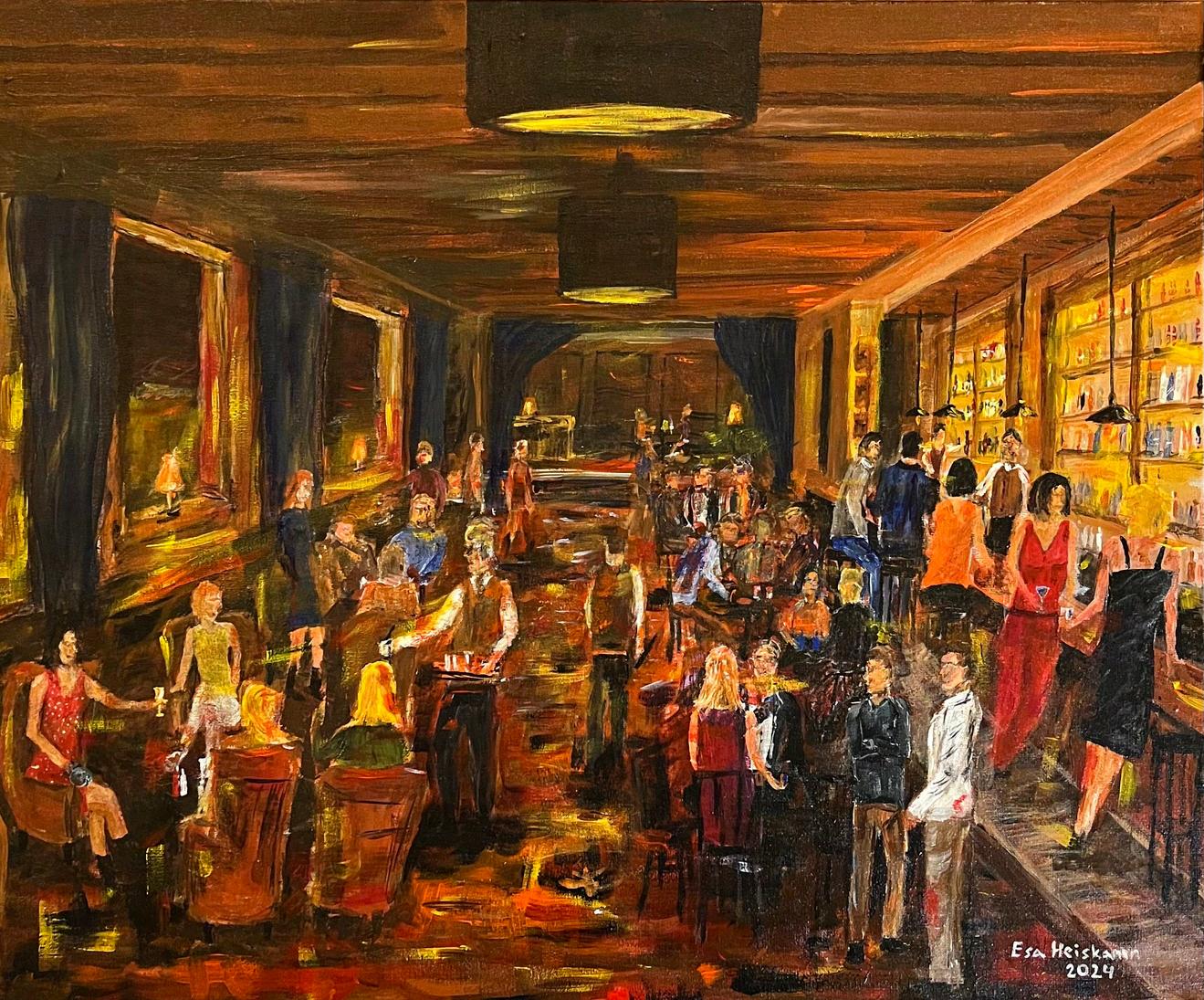
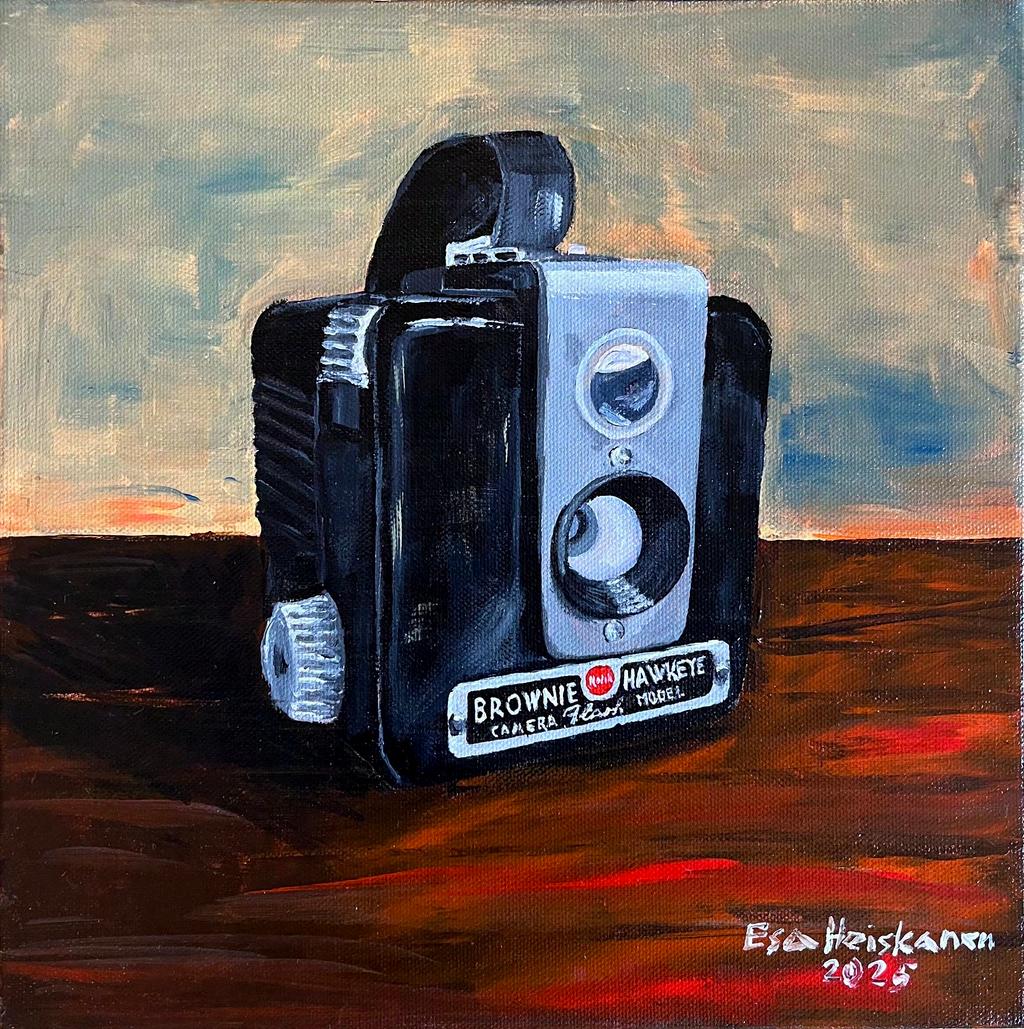
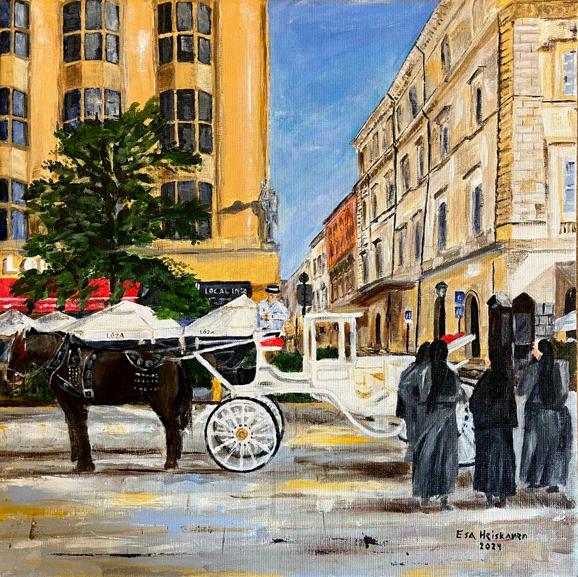
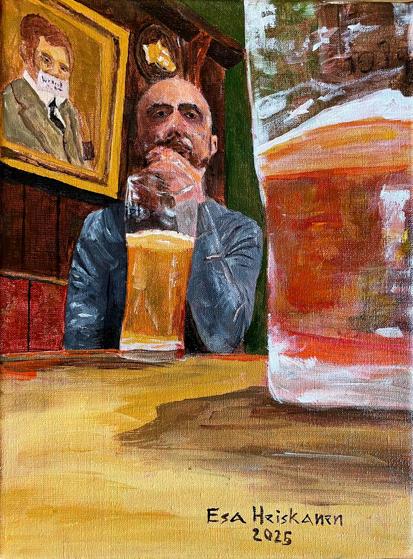
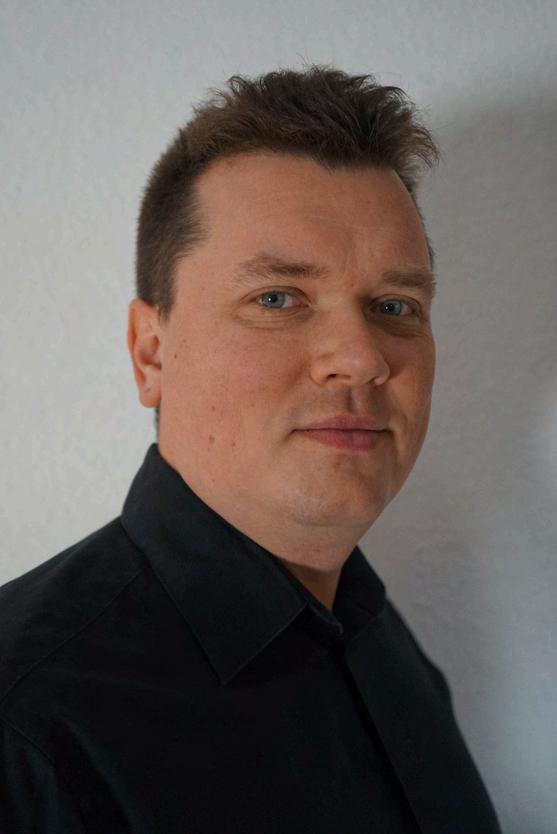


Esa Heiskanen, a self-taught artist originally from Finland, turned to painting during the Covid years after his career as a flight attendant was put on hold. Reconnecting with art, he rediscovered his creative passion, and now living in the vibrant city of Kraków, Poland, he draws inspiration from its beautiful architecture and dynamic cultural scene.

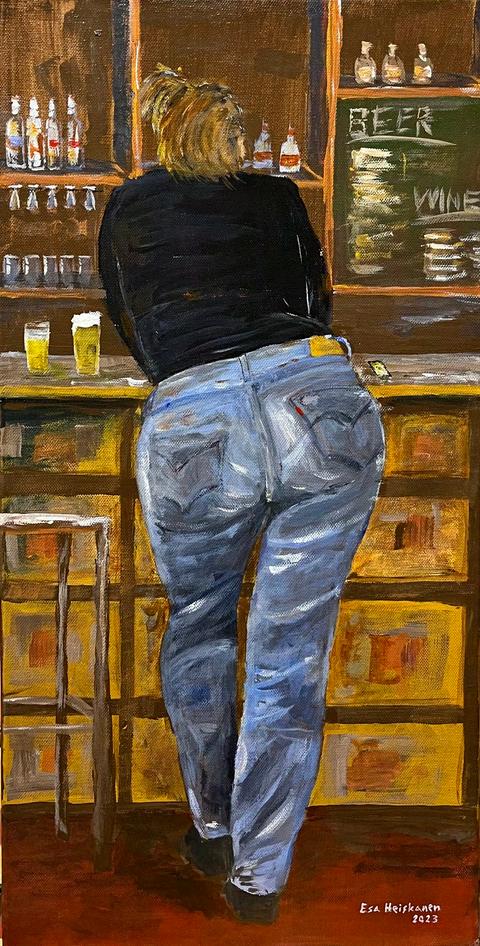

Technic: acrylics and oil on canvas
Size: 28 x 35 cm


Technic: graphite and markers
As a visual artist, I relate my work and aesthetic to saturated color, hearts, stickers and other fun shapes, adapting graphics, designs, experiences and images to the discourse related to the importance of connecting with our purest self. I love to portray musical artists and people who inspire me, give them my artwork and educate with my art, and I create content on social media (@juliadgart) based on that. The very aesthetics of my personal image relates to the aesthetics of my artwork. If the viewer looks at me through my glasses of hearts, she ends up knowing my work perfectly, as she and I are one.
Size: 42x29,7cm


DESERT ORCHID, 2025
Technic: Polyester, metal, wood
Size: 88 x 45 cm

FROM CYCLE GENESIS, date

INTO THE VOID, date
Technic: graphite and markers on paper.
Size: 42x29,7cm
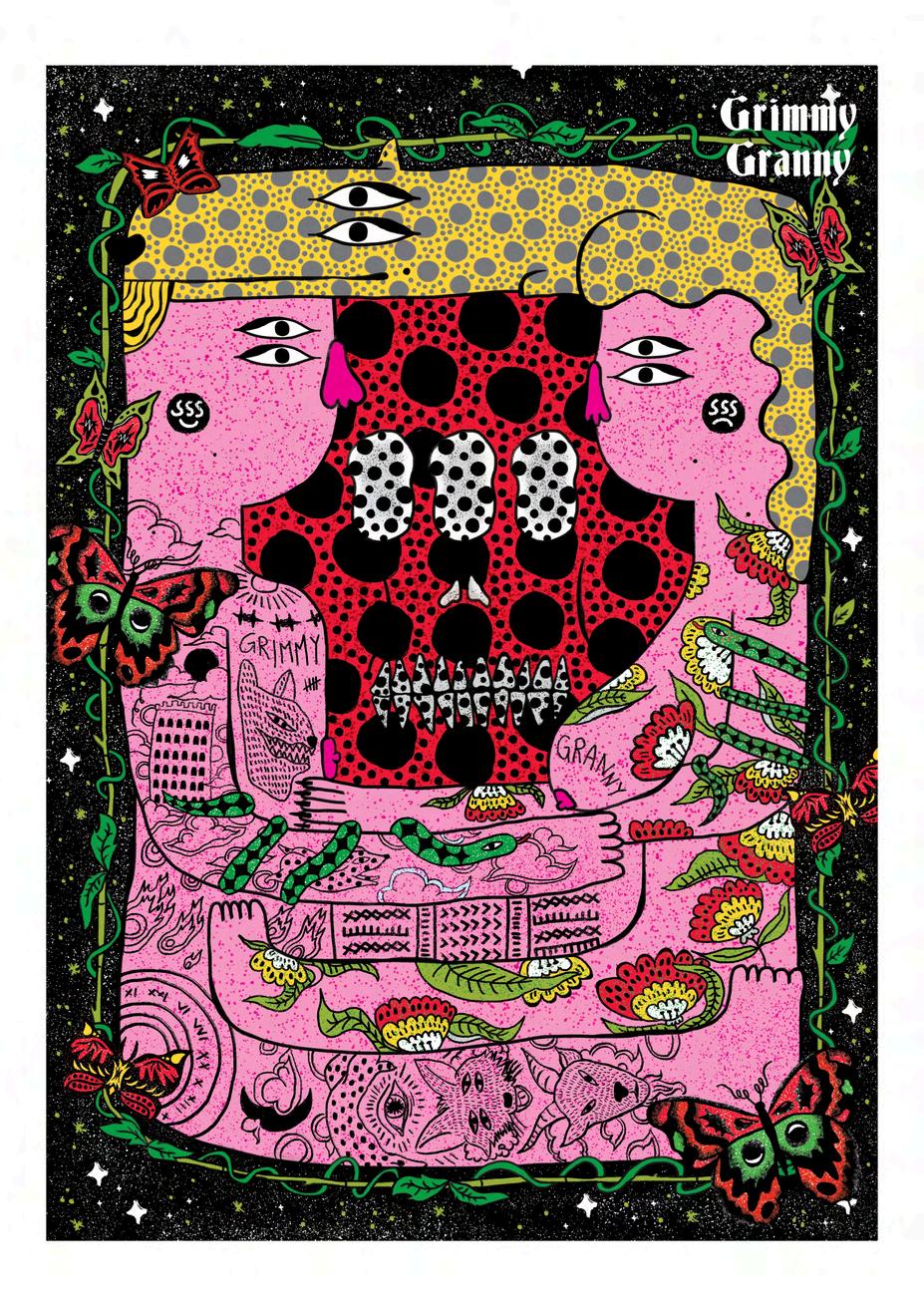
TOXIC LOVER, date
Technic: graphite and markers on paper.
Size: 42x29,7cm
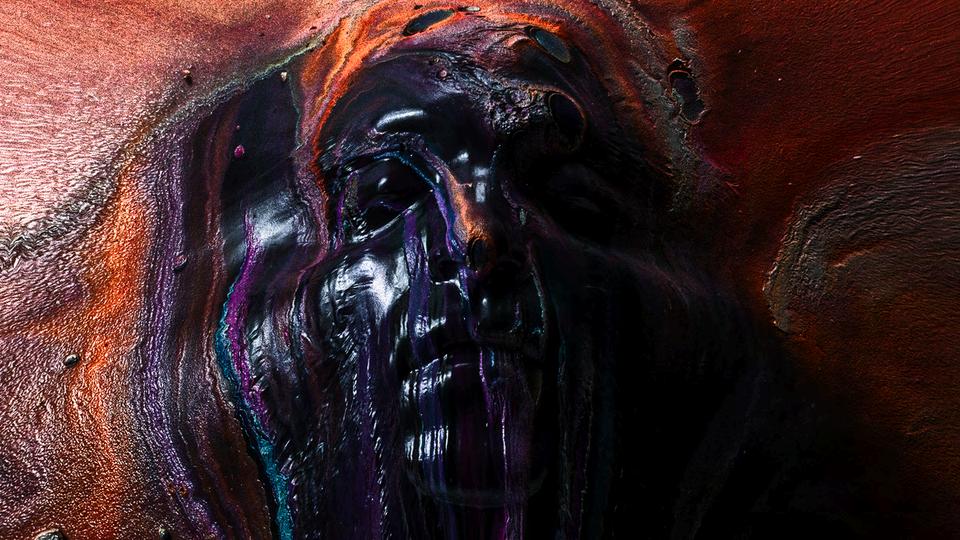





ALL ABOARD
Technic: graphite and markers on paper.
Size: 42x29,7cm
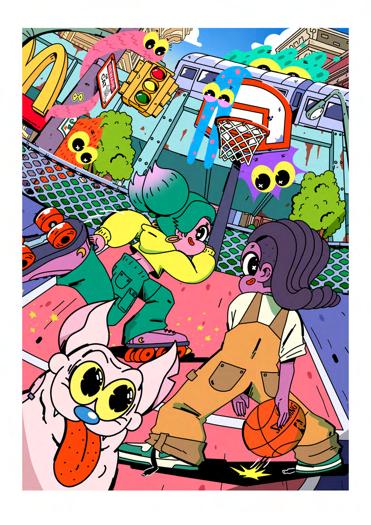
AFTER SCHOOL JAMMING
Technic: graphite and markers on paper.
Size: 42x29,7cm

SELFIE WITH DIMIE
Technic: graphite and markers on paper.
Size: 42x29,7cm
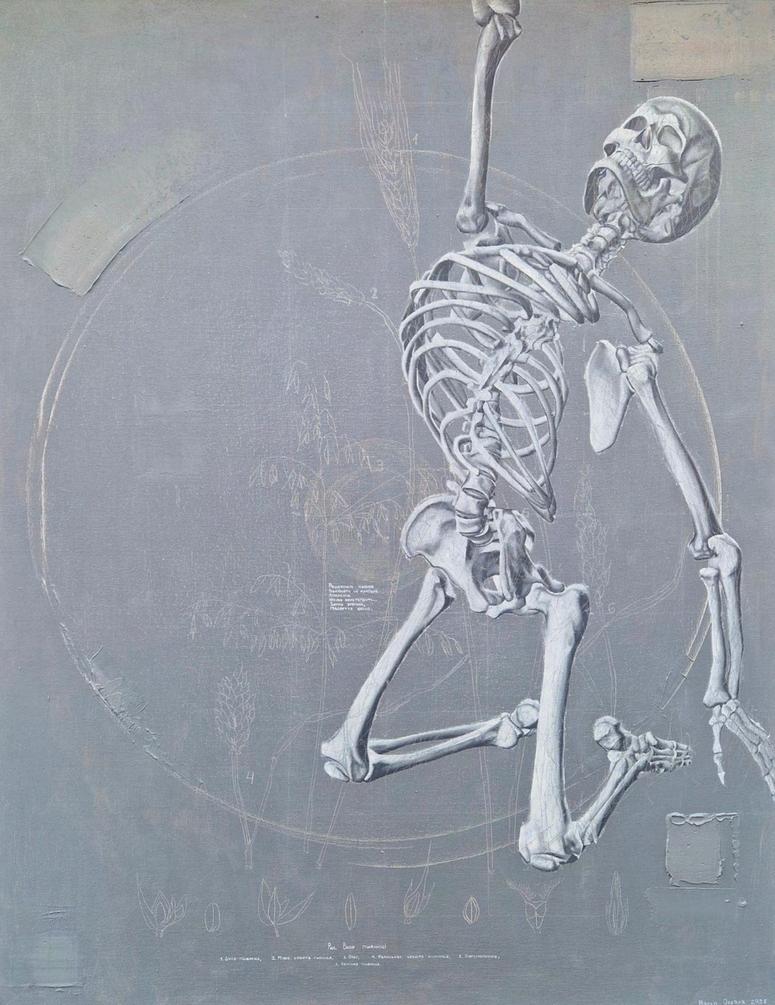
DEFORMATION, 2025
Technic: Canvas, oil painting
Size: 100 x 80 cm

CHERRY ROOTS, 2025
Technic: Canvas, oil painting, acrylic marker
Size: 190 x 90 cm

DESERT ORCHID, 2025
Technic: Polyester, metal, wood
Size: 88 x 45 cm
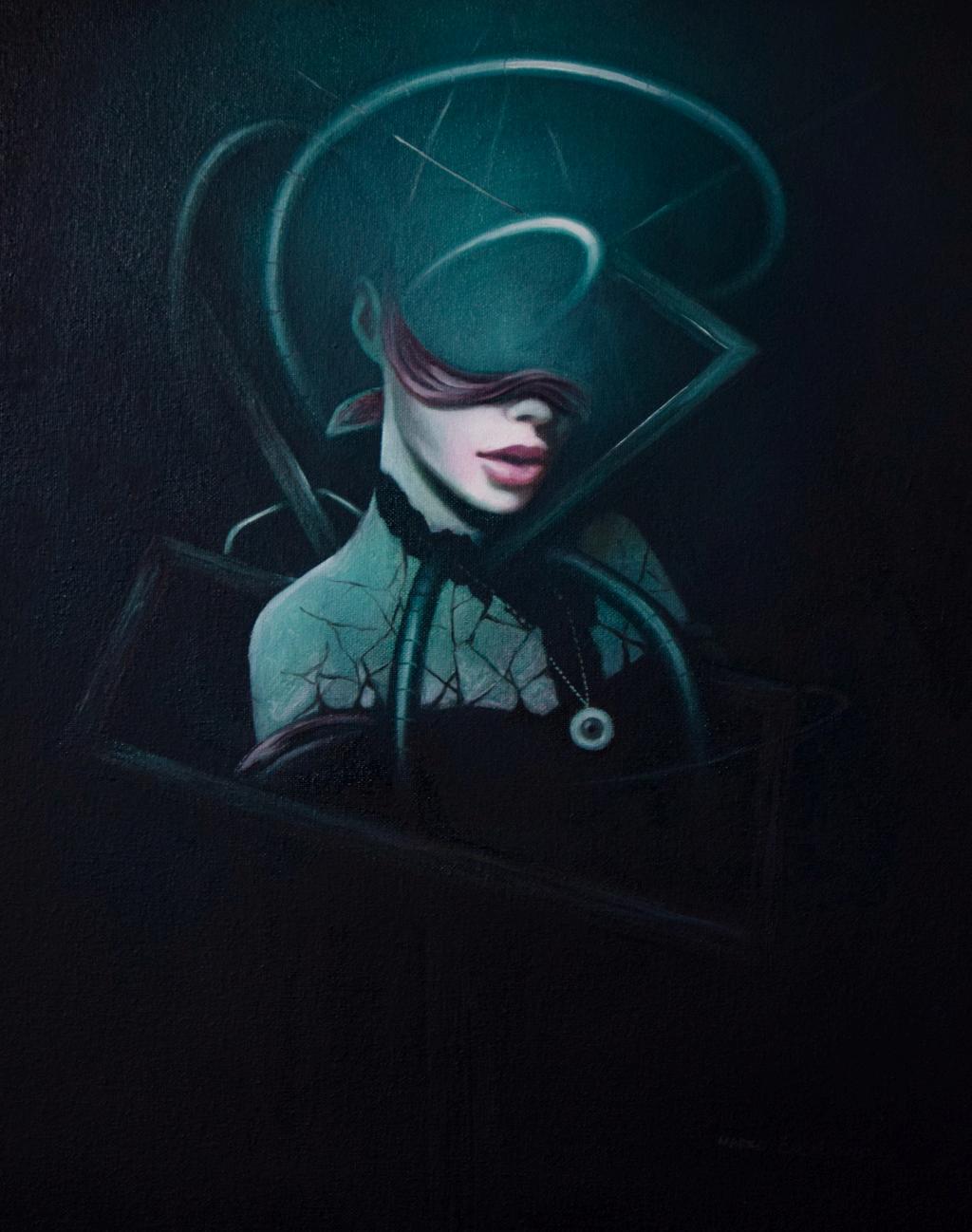

date
Technic: 3D ceramic pet portraiture
Size: 170 x 230 x 220 mm

RABBIT, date
Technic: Ceramic sculpture
Size: 22.5 x 17 x 17 cm and 28.5 x 14.5 x 16 cm

Technic: oil on canvas
Size: 20 x 16 in

Technic: 3D walnut woodcarving
Size: 160 x 160 x 55 mm